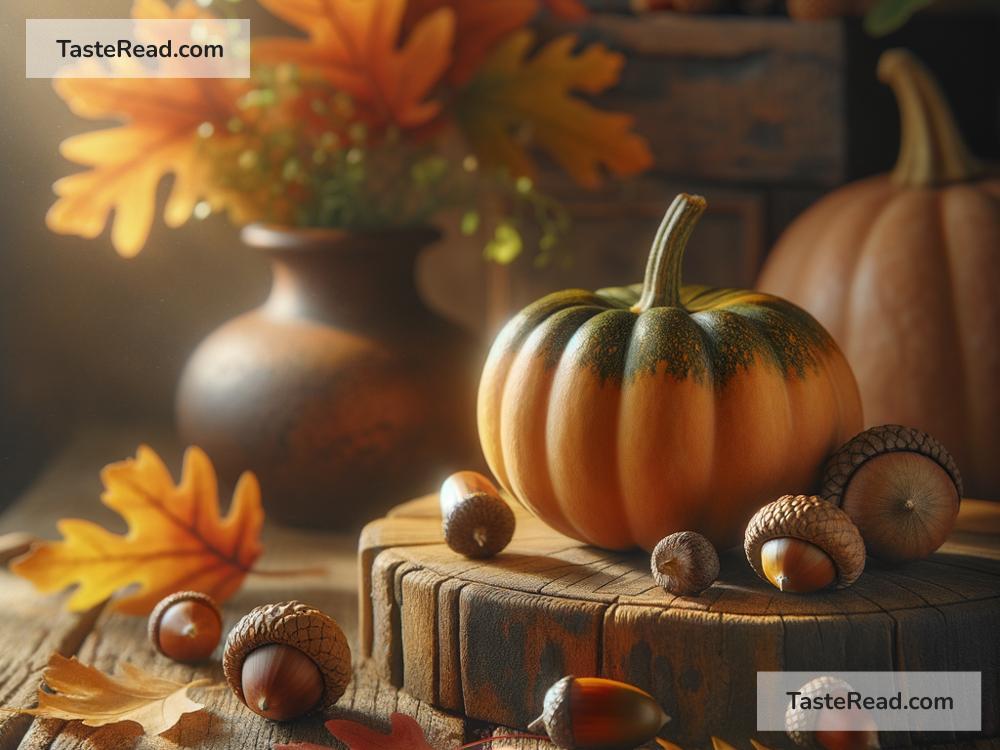Why Is Acorn Squash Shaped Like an Acorn?
Acorn squash is a small winter squash that stands out because of its unique shape. Its ribbed, rounded body and pointed tip at the bottom make it look similar to an acorn—the seed from oak trees. But have you ever wondered, “Why is acorn squash shaped like an acorn?” Is there a reason behind its distinct design, or is it simply a coincidence? Let’s unpack the story behind this curious vegetable and learn more about its characteristics.
What Is Acorn Squash?
Acorn squash belongs to the squash family, also known as Cucurbitaceae. It’s a type of winter squash, meaning it’s harvested later in the year and has a firm skin that allows it to be stored for weeks or even months. Compared to summer squashes like zucchini, which are softer and eaten fresh, winter squash varieties have tough exteriors and are used in cooking during colder seasons.
Acorn squash is typically dark green in color, although some variations include orange or golden stripes. When you slice it open, you find bright yellow-orange flesh and a hollow cavity filled with seeds. It’s slightly sweet and nutty in flavor, making it a favorite in soups, casseroles, and roasted dishes.
But the standout feature of acorn squash is, of course, its shape. It’s no surprise where it got its name—the vegetable looks just like a giant acorn. This isn’t true for all squashes, though. Spaghetti squash, butternut squash, and pumpkins all have different shapes. So why does acorn squash look the way it does?
The Shape Is a Natural Result of Growth
The acorn-like shape of acorn squash doesn’t come from a deliberate design—nature created it that way! Plants have unique ways of growing and producing fruits. Acorn squash develops its shape as it matures on the vine. The ribbing and tapered point form naturally as the fruit develops in size. These traits are specific to acorn squash and are inherited from its ancestors.
Acorn squash is part of the species Cucurbita pepo. This species includes various other squashes and gourds, some of which also have unique shapes. Over time, the acorn squash stood out because of its resemblance to the acorn seed. Farmers and gardeners selected and cultivated varieties with this shape, giving us the acorn squash we’re familiar with today.
Why the Acorn Shape?
We might wonder—why does this particular squash shape resemble an acorn rather than something else? There isn’t a concrete explanation for the resemblance, but it may simply be a coincidence. Many fruits and vegetables grow in shapes that are influenced by genetics, environmental conditions, and the way the plant develops.
Acorn squash’s compact, ribbed design has benefits in nature. The small, sturdy size makes it easy for the fruit to stay attached to the vine as it grows without breaking off or becoming damaged. The pointed bottom also helps the squash settle into the soil as it matures on the ground. These features likely helped acorn squash survive and thrive over generations.
The ribbing of the squash may also play a role in protecting the plant. The ridges provide structure and strength, making the fruit less prone to cracking or collapsing under pressure. In a sense, its shape evolved to suit the squash’s needs as a plant. The fact that it happens to resemble an acorn is just an added quirk.
How Humans Played a Role
While acorn squash’s shape is natural, humans played a role in preserving and spreading this vegetable. Over thousands of years, farmers and gardeners have grown and bred squash plants for specific traits—including flavor, size, and shape. When people saw a squash variety that looked like an acorn, they likely grew more of it because its unique appearance was appealing.
This process is called “selective breeding” or “artificial selection.” It’s how we’ve ended up with pumpkins round enough to carve for Halloween, watermelon with fewer seeds, and tomatoes in vibrant colors. Acorn squash’s popularity may have increased because people liked how it resembled the acorn, a symbol of fall and nature.
Today, you’ll find acorn squash in grocery stores and farmer’s markets during autumn and winter. Its acorn-like shape makes it a festive addition to seasonal dishes and decorations.
Why Does the Shape Matter?
Besides looking like an acorn, the shape of acorn squash is practical. Its size is perfect for slicing in half and roasting, creating “bowls” filled with ingredients like butter, brown sugar, or savory stuffing. The ribbed texture makes it easier to slice into even wedges, too. Many cooks appreciate these features, in addition to its sweet flavor and creamy texture.
The acorn-like design also ties in with autumn themes. Acorns are often associated with fall, forests, and harvest traditions. Acorn squash fits perfectly into this seasonal mood, making it a favorite for meals during Thanksgiving and cozy winter nights.
Conclusion
So, why is acorn squash shaped like an acorn? The simple answer is that it grew that way naturally! Through evolution, genetics, and human cultivation, acorn squash developed its iconic ribbed, tapered shape. The resemblance to an acorn is a fun coincidence that makes this vegetable even more special.
Now, the next time you see an acorn squash, you can appreciate not just its delicious flavor but also its history and unique design. Nature has a way of surprising us with shapes and patterns, and the acorn squash is a perfect example of this beauty!


